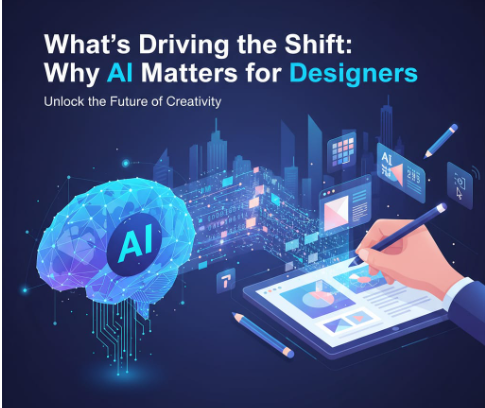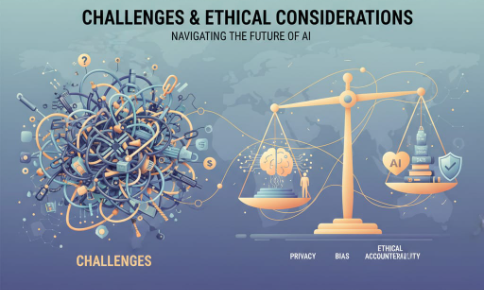Table of Contents
- Introduction
- What’s Driving the Shift: Why AI Matters for Designers
- Top AI‐Driven Design Trends in 2025
3.1 Personalized Typography & User Experiences
3.2 Automated Design Generation & Layouts
3.3 Human‐Machine Collaboration: The New Creative Workflow
3.4 Inclusive, Accessible & Ethical Design
3.5 Sustainability & Green Design in the AI Era - Impact on Fonts & Typography
- How RaisProject Fonts Fit Into These Trends
- Challenges & Ethical Considerations
- Preparing for the Future: Skills & Tools Designers Need
- Conclusion
1. Introduction
AI design trends 2025 are reshaping the creative industry at an incredible pace. Artificial intelligence is no longer just a futuristic concept; it has become a daily partner for designers, influencing typography, branding, and overall creative direction. From automated layouts to personalized font choices, AI is transforming the way we approach design. For font designers and creative studios, these trends open up new opportunities while also raising important challenges that must be addressed.
2. What’s Driving the Shift: Why AI Matters for Designers
Several forces are pushing AI into the heart of design:
- Speed and efficiency : AI tools can generate multiple design options quickly, which frees designers from certain repetitive tasks. This gives more time for concept, refinement, and creativity.
- Data-driven decisions : Designers can now use AI to test typography choices, color palettes, layouts, and user responses based on actual user behavior and analytics.
- Personalization expectations : Users increasingly expect interfaces, branding, and visuals that feel tailored to them. AI enables dynamic typographic choices, adaptive layouts, and more versatile design systems.
- Accessibility & inclusivity : AI can help with ensuring readability, color contrast, and adjusting typography for different needs (eg dyslexia, low vision), making designs more usable.
These insights are supported by recent analyses: Adobe’s “Graphic Design Trends for 2025” mentions AI-powered design , bold minimalism , retro serifs , etc.AdobeMeanwhile, Creative Industry Trends reports that 89% of designers say AI has already improved their workflow, particularly in ideation phases.Dusted

3. Top AI Design Trends in 2025
3.1 Personalized Typography in AI Design Trends 2025
One of the most exciting aspects of AI design trends 2025 is dynamic typography that adapts to users and contexts.
3.2 Automation in AI Design Trends 2025
Generative design tools create instant layouts, while designers refine them with human creativity.ions faster than ever, and iterate more. But typography still needs human care for legitimacy, consistency, and personality.
3.3 Human-Machine Collaboration: The New Creative Workflow
Rather than replacing designers, AI is becoming a collaborator:
- Designers generate options, then refine them with human taste, cultural nuance, ethical judgment.
- AI as assistant: suggest typeface, color, spacing, testing prototypes.
- Hybrid workflows: sketches + AI prompts + manual refinement.
Research shows that when used in ideation, AI helps designers explore more design alternatives and speeds up divergent thinking.arXiv
3.4 Inclusive, Accessible & Ethical Design
AI increasingly assists in ensuring typography and design are more inclusive:
- Checking color contrast, adjustable font size, readability for dyslexia.
- Ensuring typographic design works across devices and for users with disabilities.
- Ethical concerns: who owns AI-generated designs, bias in AI training datasets, giving credit, etc.arXiv+ 1
3.5 Sustainability & Green Design in the AI Era
Sustainability is intersecting with AI in design in surprising ways:
- AI tools help optimize materials, ink usage in printed work.
- Digital mockups reduce waste.
- Fonts with optimized hinting and vector data to reduce file sizes (thus less server/storage energy) are more in demand.
4. Impact on Fonts & Typography
For font creators, AI design trends 2025 highlight the growing need for variable fonts, handcrafted styles, and licensing clarity.
- Versatility : Create typefaces with multiple styles (weights, widths, alternates) so AI systems can choose the best for different contexts.
- Variable fonts : These will become more important, as they allow smooth transitions in typography style or weight via AI control.
- Metadata, licensing clarity : If AI tools use fonts, licensing must be clear. Foundries offering clear, flexible licenses will perform better.
- Handcrafted vs generated : There will be a premium on fonts with character, organic/handmade feel, as a counterpoint to the overly “perfect” AI-generated style.
5. How RaisProject Fonts Fit Into These Trends
RaisProject Studio offers a variety of handcrafted and display fonts that align well with these AI-driven trends. Here are some ways your fonts can be integrated:
- Use one of your Display Fonts for bold minimal designs or surreal branding projects, where AI selects something eye-catching for headlines (eg Glitch Zone Display Font ) – plugin link: Glitch Zone Display Font
- For branding or projects requiring a human touch, your Brush Fonts (textured, rough edges, hand-drawn feel) help provide authenticity and contrast to smoother AI visuals.
- Use Sans & Serif styles in adaptive UI / responsive typographic systems, especially as variable font tech becomes more accessible.
- Font Duos from your collection are useful in AI tooling when combining headline and body typography dynamically.
These products lean into the trend toward handcrafted, unique fonts that stand out in a sea of generative visuals.
6. Challenges & Ethical Considerations
While opportunities are massive, these issues can’t be ignored:
- Ownership & licensing : AI tools sometimes use fonts or designs without proper permission. Foundries need to ensure their licensing terms protect them.
- Bias in training data : AI models trained on biased data can favor certain typographic styles or cultural aesthetics, marginalizing others.
- Over-automation risk : Font designers may see commoditization if many fonts look “AI-generated” with less distinctiveness. Maintaining artistic voice matters.
- Accessibility compliance : Even if AI suggests something visually appealing, it may compromise readability or inclusive design if not checked.

7. Preparing for the Future: Skills & Tools Designers Need
To stay ahead:
- Learn prompt design & how to use generative tools intelligently.
- Understand data & analytics to inform design decisions (user behavior, data contrast, font performance).
- Invest in usability & accessibility testing.
- Keep exploring handcrafted methods; balance between machine-assisted design and human craft.
- Stay informed about ethical frameworks around AI, copyright, and font licensing.
8. Conclusion
As we look at AI design trends 2025 , one truth is clear: artificial intelligence is not replacing creativity but enhancing it. Designers who embrace this balance will thrive in the future of typography and branding.
References & Further Reading
- Graphic Design Trends for 2025 – Adobe Express.Adobe
- Creative Industry Trends: How AI is Reshaping Branding – Dusted Insights.Dusted
- Design Trends 2025: AI Transforms the Creative Industry – Letterhend Studio.letterhend.com
- Research: Beyond Automation: How UI/UX Designers Perceive AI as a Creative Partner – arXiv.arXiv

